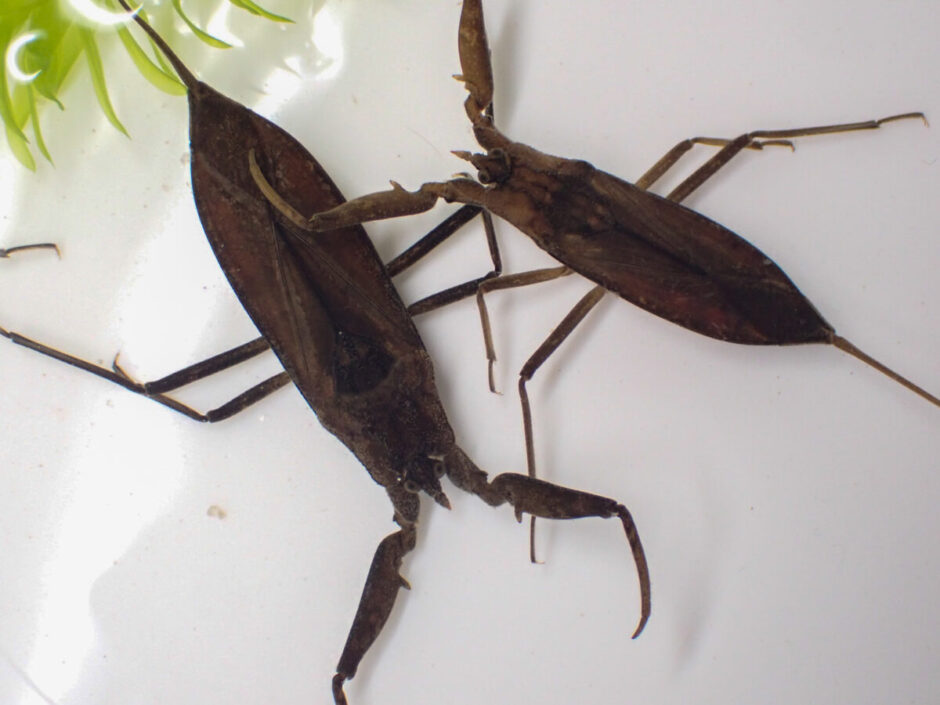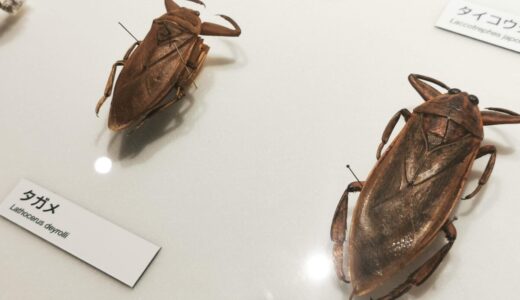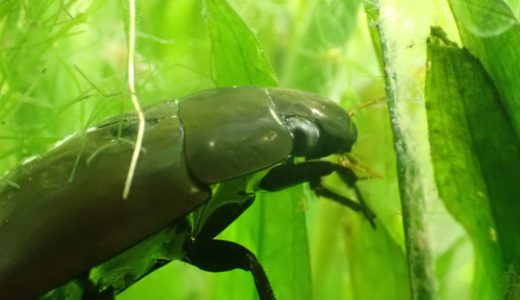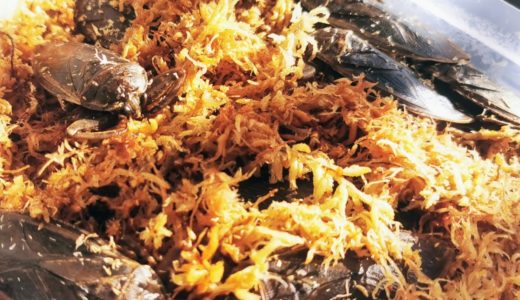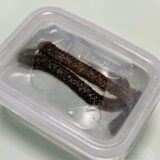Water scorpion is an aquatic insect.They are decreasing in number nationwide. Characteristics of water scorpion, breeding method, habitat, differences from Nepa hoffmanni and Nepa rubra etc. Water scorpion is a big species with a body length of more than 3 cm except for breathing tubes, and breeds small insects and small fish as bait. water scorpion has a rare impression than subfamily Belostomatinae and big species of the family Hydrophilidae, indicating that there is a good natural environment around it if found.
Water scorpion characterized by a flat, plate-like body with a long tail.
Water scorpion is an aquatic insect classified as the genus water scorpion of the family Nepidae. The academic name is Laccotrephes japonensis. It has a flat body and sickle similar to a scorpion, as it is called water scorpion in English. Like the Ranatra chinensis, it has a long breathing tube and a body length of 30-35 mm excluding the breathing tube. The color is brownish-brown to black-brown, and it has a habit of pseudo-dying when held in the hand.
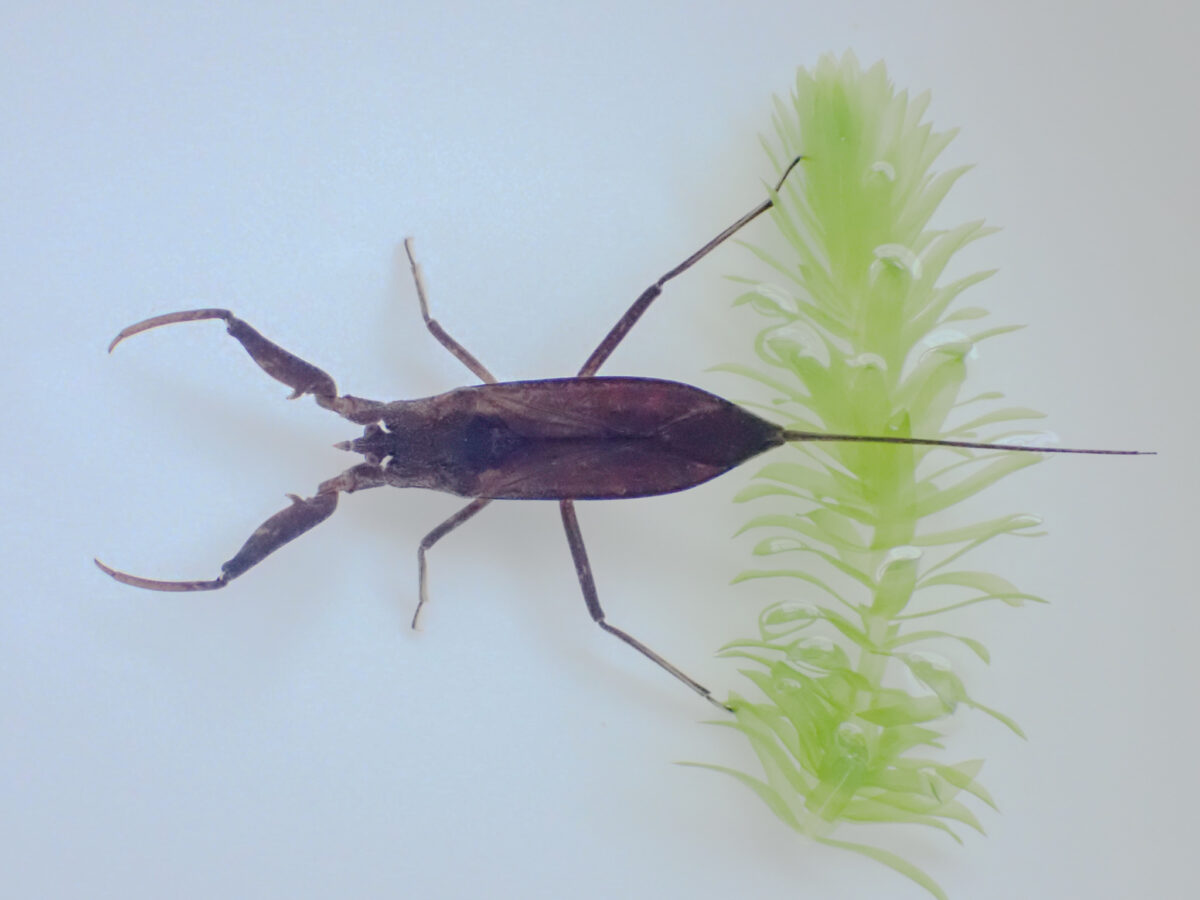
Water scorpion’s front leg. There is a protrusion in the power hump part and it is cool. Like subfamily Lethocerinae, it digests prey by piercing a sharp proboscis.
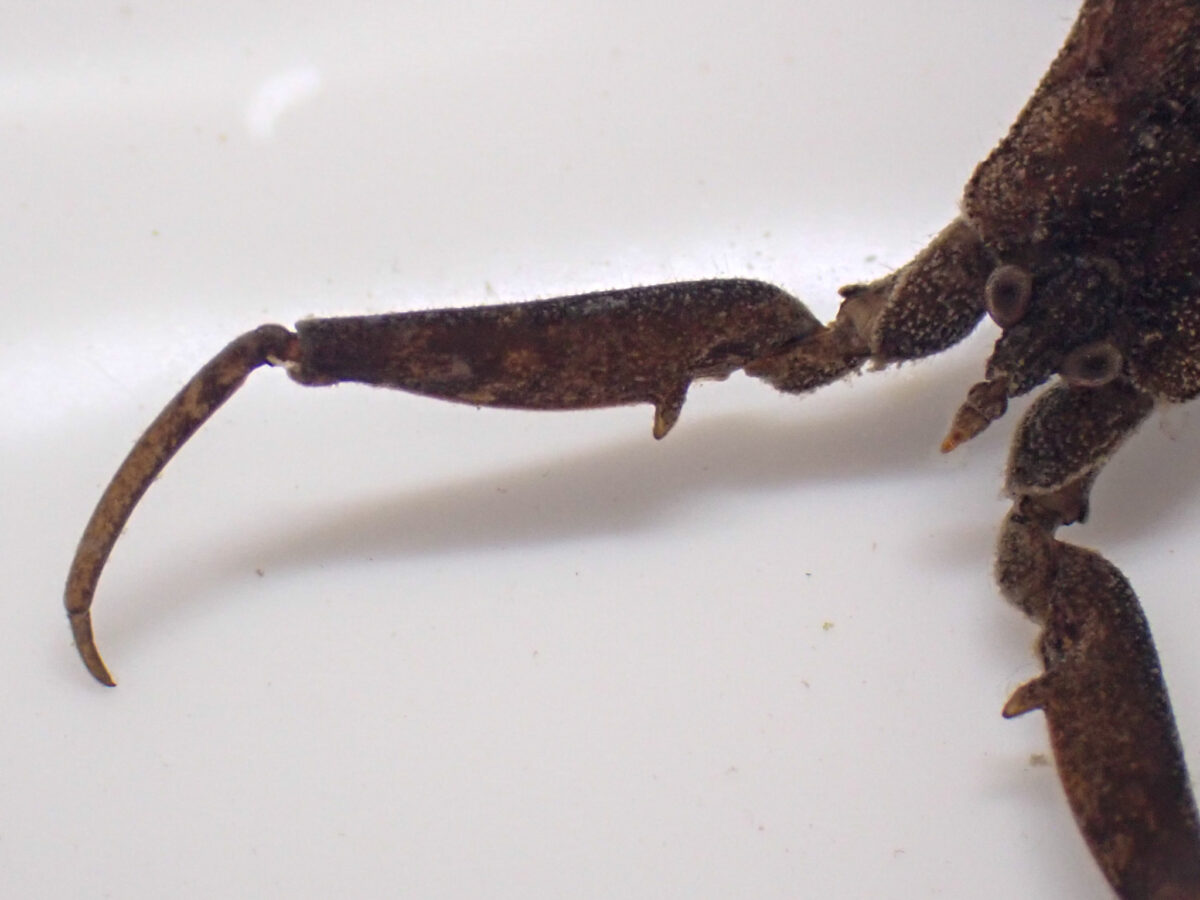
Water scorpion’s lower body. Like Ranatra chinensis, it has a long breathing tube, but it has the impression that it lurks more on the bottom.
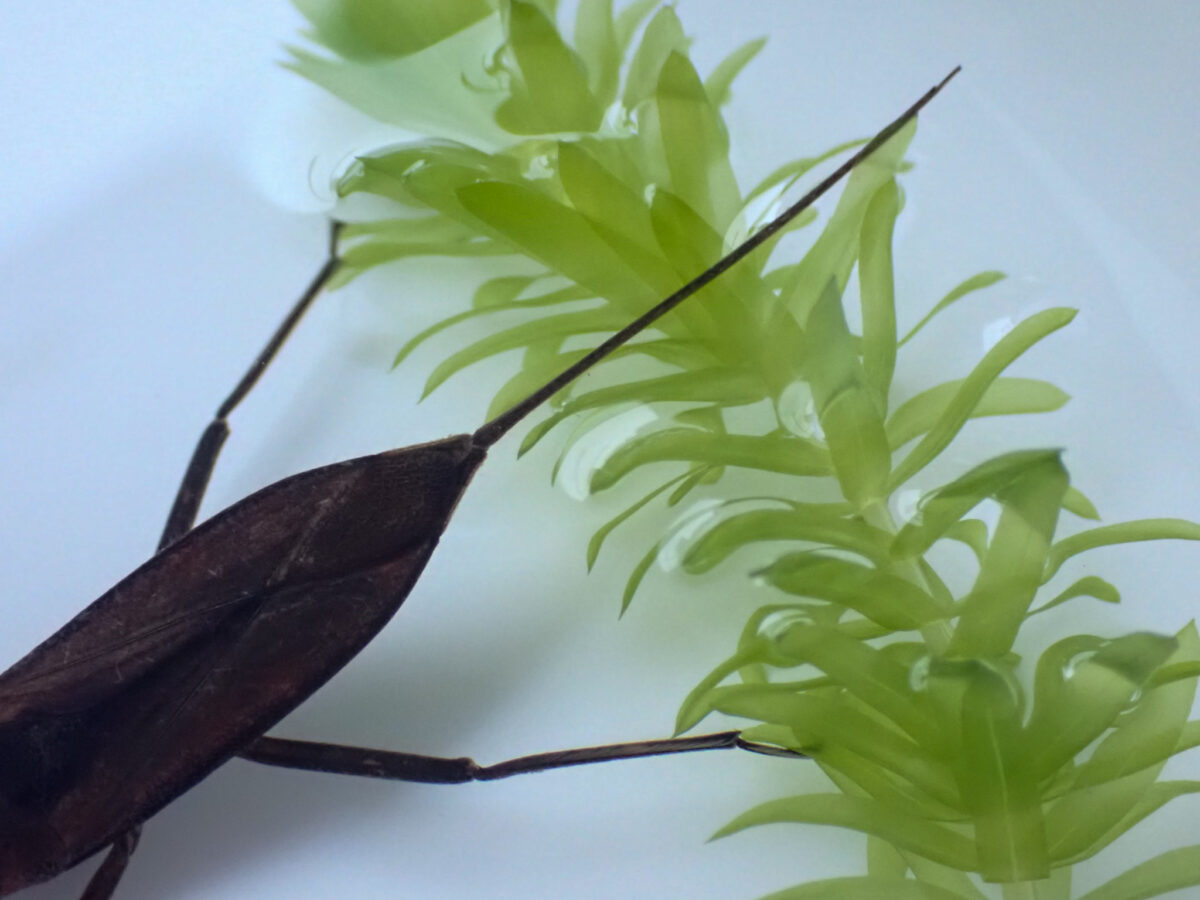
Males and females can be distinguished by genitals, but they can be distinguished by females with a wide and large width from males on a slightly slender body.
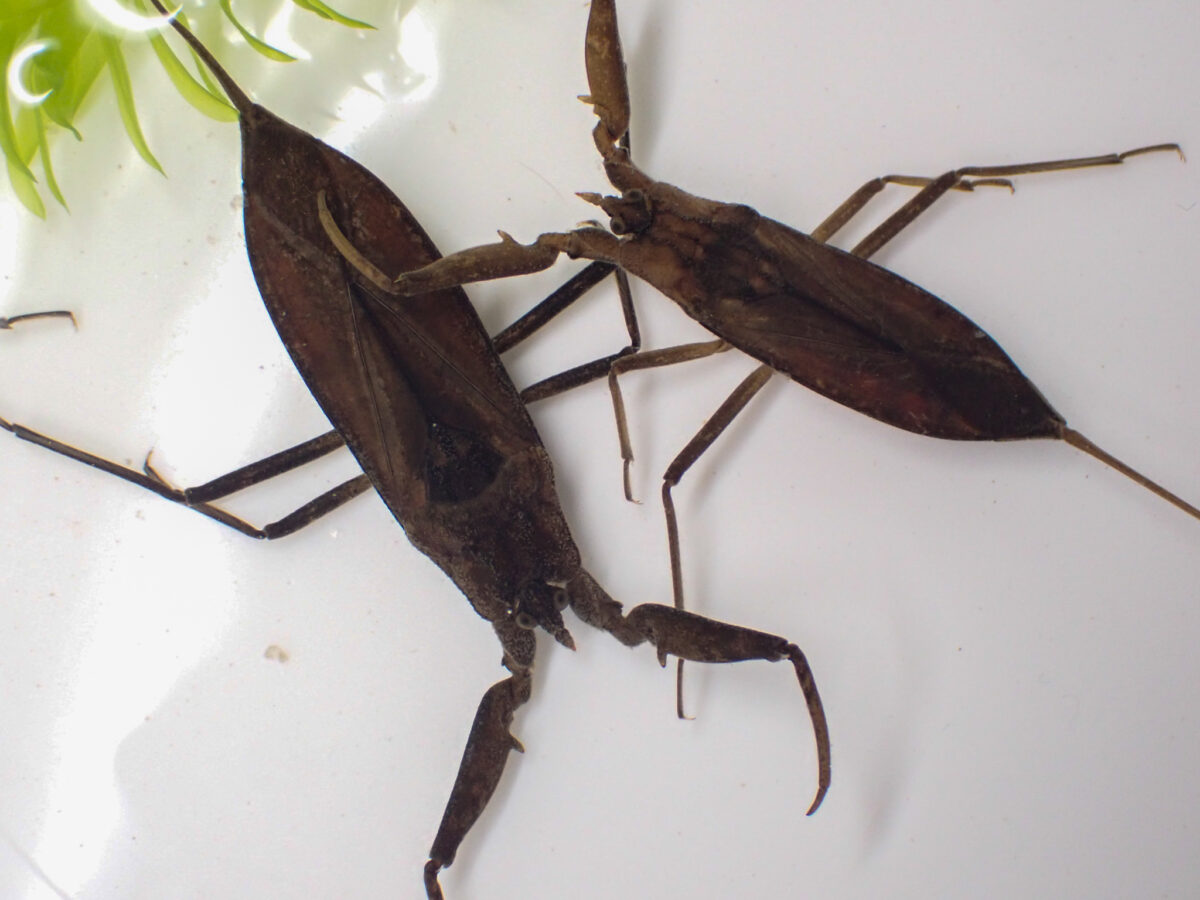
Water scorpion have dead pretend. There is a habit of shortening the leg and dying pseudo.
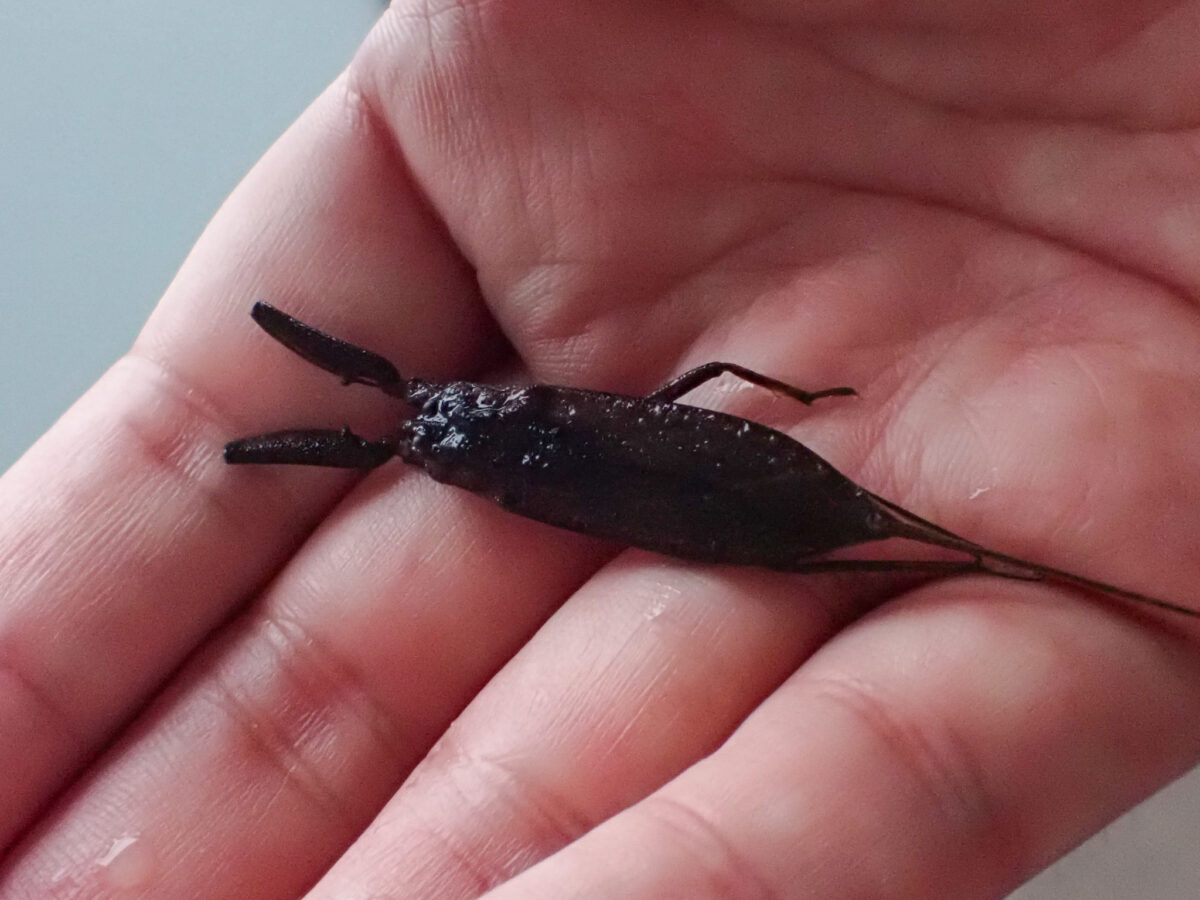
Habitat of water scorpion
Water scorpion lives in shallow wetlands, such as waterways around rice fields and reservoirs with aquatic plants. Like subfamily Lethocerinae, water scorpion had dropped sharply by around 1980 due to pesticides and development, and has since survived in hilly and mountainous areas. It is not often in the deep place that the flow is fast.
Even today, there are many factors that decrease, such as the development of concrete waterways, the invasion of crayfish, and the disappearance of shallow wetlands due to vegetation transitions and cultivation abandonment. Compared to the often-flying Ranatra chinensis, the disappearance of habitats seems to lead to the disappearance of populations. If there is water scorpion, it can be said that the environment suitable for the habitat of other aquatic insects remains.
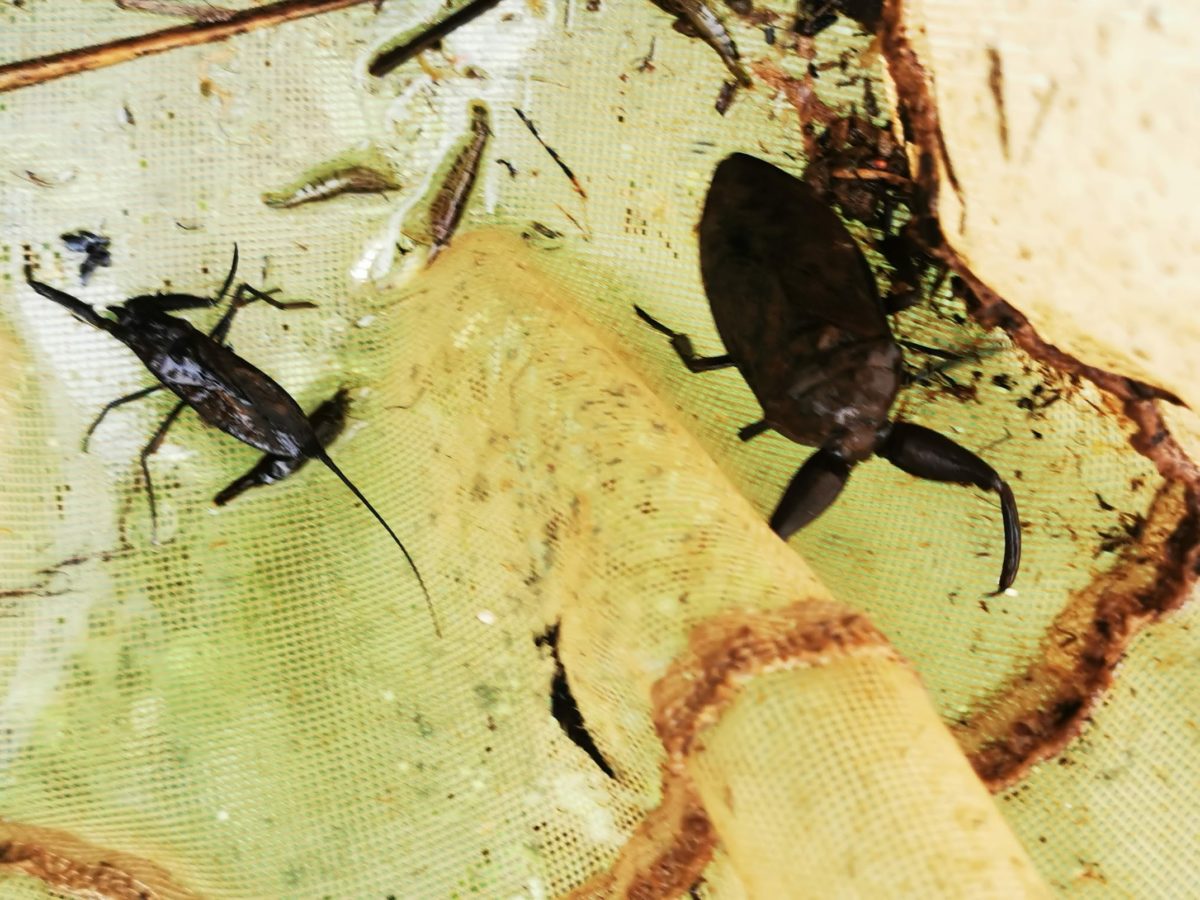
The difference between a well-mistaken Giant Water Bug and Water scorpion
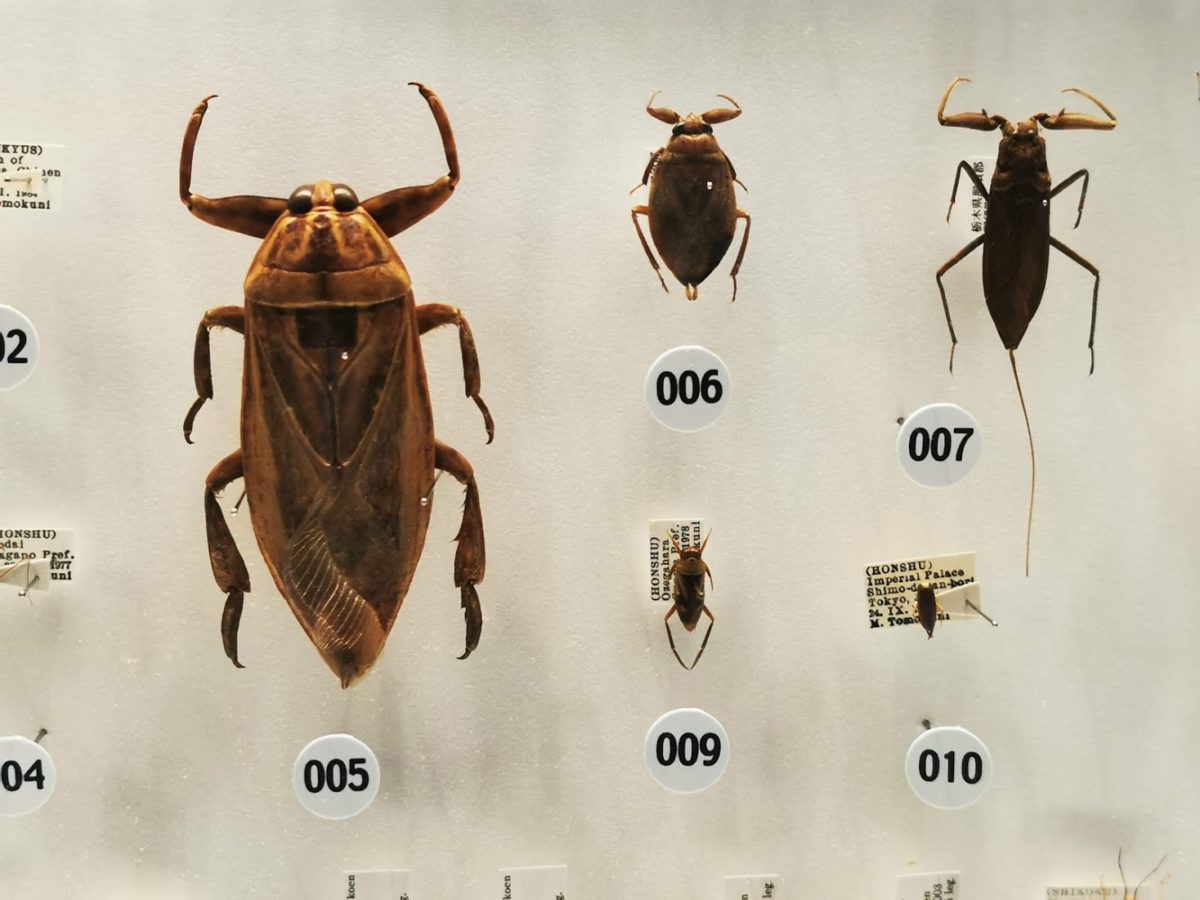
Kirkaldyia deyrolli is the biggest aquatic insect in Japan and everyone knows its name.Since the number of people who have seen Kirkaldyia deyrolli is decreasing, subfamily Belostomatinae and water scorpion are often mistaken for Kirkaldyia deyrolli. This is a specimen of the National Museum in Tokyo, but 005 is Lethocerus indicus, 006 is subfamily Lethocerinae, and 007 is water scorpion. It can be found that the size and shape are completely different, although the eating method that is digested by piercing and puncking with the sickle of the foreleg is common in the companion of the family Belostomatidae.
In addition, Southeast Giant Water Bug is famous for being imported as an insect food.
Status of Endangered Species In water scorpion
Water scorpion is not an endangered species in Japan, as it is not listed on the country’s Red List(RL).
On the other hand, water scorpion has been judged extinct in Tokyo and has been designated as an endangered species in several prefectures. Specifically, in addition to CR+EN in Niigata and Okinawa Prefectures, VU in Aomori and Yamagata Prefectures,Prefecture and KochiIt is designated as NT in prefectures, Nagasaki prefectures, and Kagoshima prefectures.
However, I personally doubt whether it is better than big species of the family Hydrophilidae, which is being treated as endangered in 27 prefectures. At least the rarity in the Northern Kanto region is Appasus japonicus >>> Ranatra chinensis and Hydrophilus acuminatus Montschulsky > Water scorpion > appear to be a Kirkaldyia deyrolli. Both the points and individuals found have a smaller impression than the Hydrophilus acuminatus Montschulsky.
It may be a pattern that water scorpion is not listed in the RL of each prefecture, although it is actually decreasing, but nothing is specified due to lack of information.
Water scorpions are actually decreasing in many areas, but RL may not reflect this.
When I asked about the habitat status of water scorpion on Twitter, they told me that it is decreasing in various places. Some prefectures are rarer than other endangered species, but they are not on the Red List. It may be a pattern that will disappear while thinking that it is a normal species. I would like to be concerned about the decrease in habitat spots.
For example, according to a person related to the revision of the Red List in Ehime Prefecture, he plans to include water scorpion in the next revision. Shallow such as water scorpion depends is easy to be land by vegetation transition, and if you do not manage a pond for agriculture, fallen leaves accumulate and become unsuitable for habitat.
Water srorpion was seen in Hyogo-prefecture from the 1990s to the 2000s, but after that,it was not seen.
In Azumino City, the number of water scorpion is smaller than that of Appasus japonicus and Hydrophilus acuminatus Montschulsky.
In Ishikawa Prefecture, water scorpion is rarer than the endangered Cybister japonicus.
How to feed and breed water scorpion
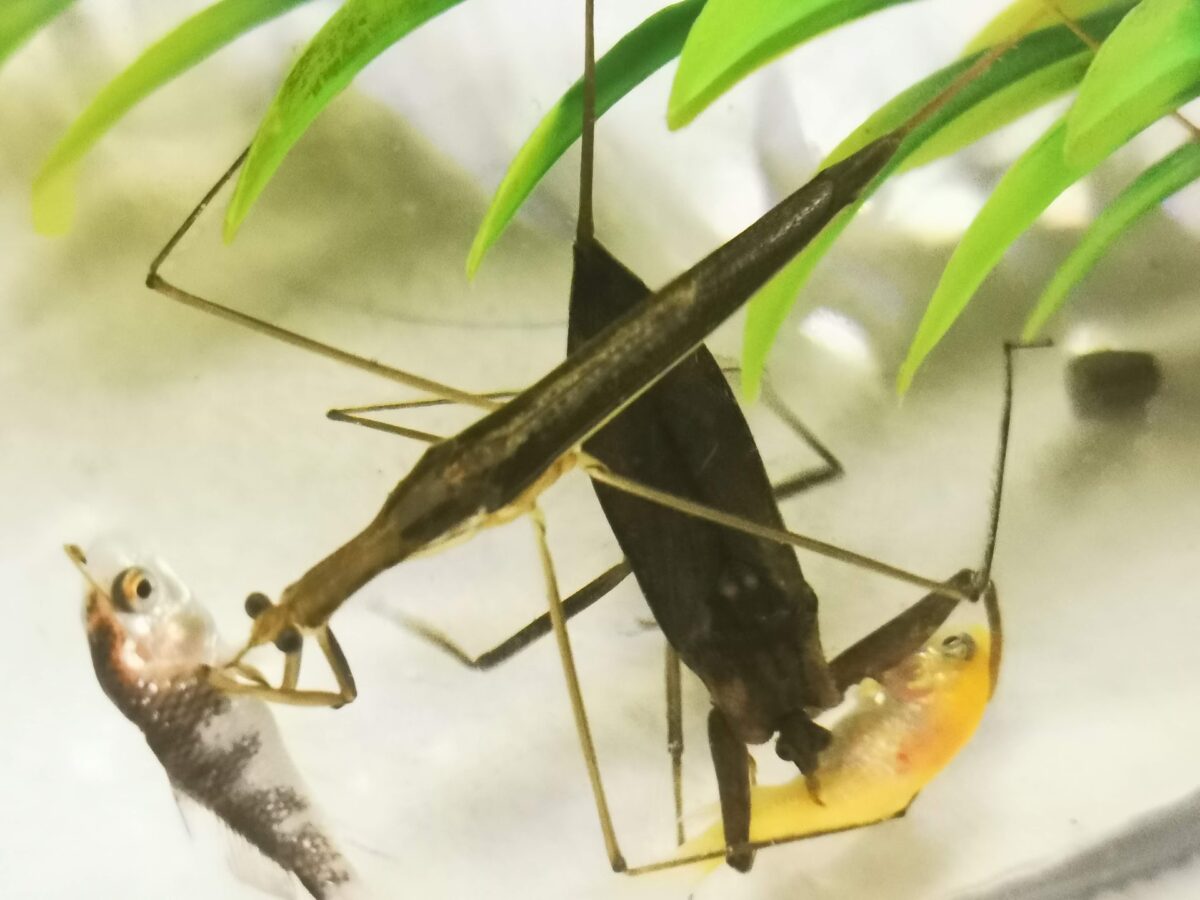

Breeding water scorpion is not so difficult. Prepare a container with scaffolding at a depth of about 5 cm to 10 cm, and feed on aquatic insects or small fish. The leftovers will stain the water, so replace it as appropriate. There is a hassle of living food, but small fish can be bought anywhere, so it is easy.
In the wild, you’ll hunt ambush-shaped to hide in the mud and capture passing bait. The amount of exercise is small, and food is not required every day. You only have to put the small fish of about the same number as the number of individuals. When the water depth is shallow, such as several cm, crickets floating on the surface of the water can also be used as bait. I have never given it, but it seems to be able to go around small shrimp. However, it hurts water, so let’s remove the leftovers immediately.
The life span is several years, and winter on land. Around November, they hide in moist fallen leaves, etc. and put it in a cool dark place, it will hibernate without permission. When it gets warm in the spring, let’s wake it up them. I think that it can be the same feeling as the hibernation method of the Kirkaldyia deyrolli. In captivity, it is okay even in water wintering, and the container is placed in a place where the water temperature is stable, such as in the shade.
Water scorpion lays about 10 eggs on the ground, such as moss moistened in early summer and an oasis for fresh flowers. The photo shows a similar type of Nepa hoffmanni egg, and water scorpion’s egg has a beard as well.
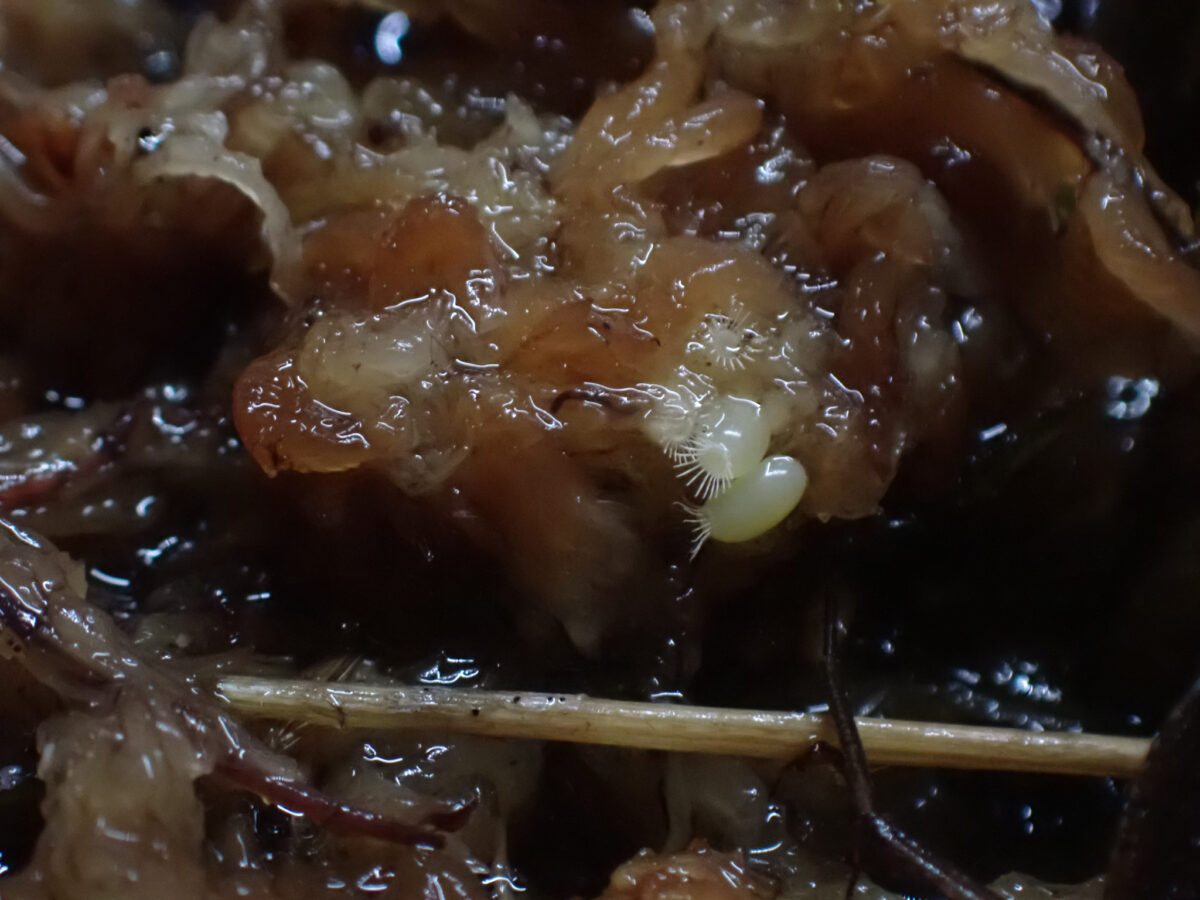

Differences from Nepa hoffmanni and Nepa rubra
Among water scorpion’s companions are the smaller Nepa hoffmanni and overseas there is a Nepa rubra, nearly 1.5 times larger.
Nepa hoffmanni is a small water scorpion with a body length of about 20 mm. In Japan, it lives in a limited area.Laccotrephes japonensis is rarer in the vicinity of Nagoya.
The wings of Nepa hoffmanni degenerate and cannot fly. It lives in the water’s water’s perident and wet track and field areas, which have been kept by spring water. The breathing tube is also short, and if you throw it into a container only of water, you may drown and die. Because of its low mobility capacity, it can be said that it is extremely weak in development.
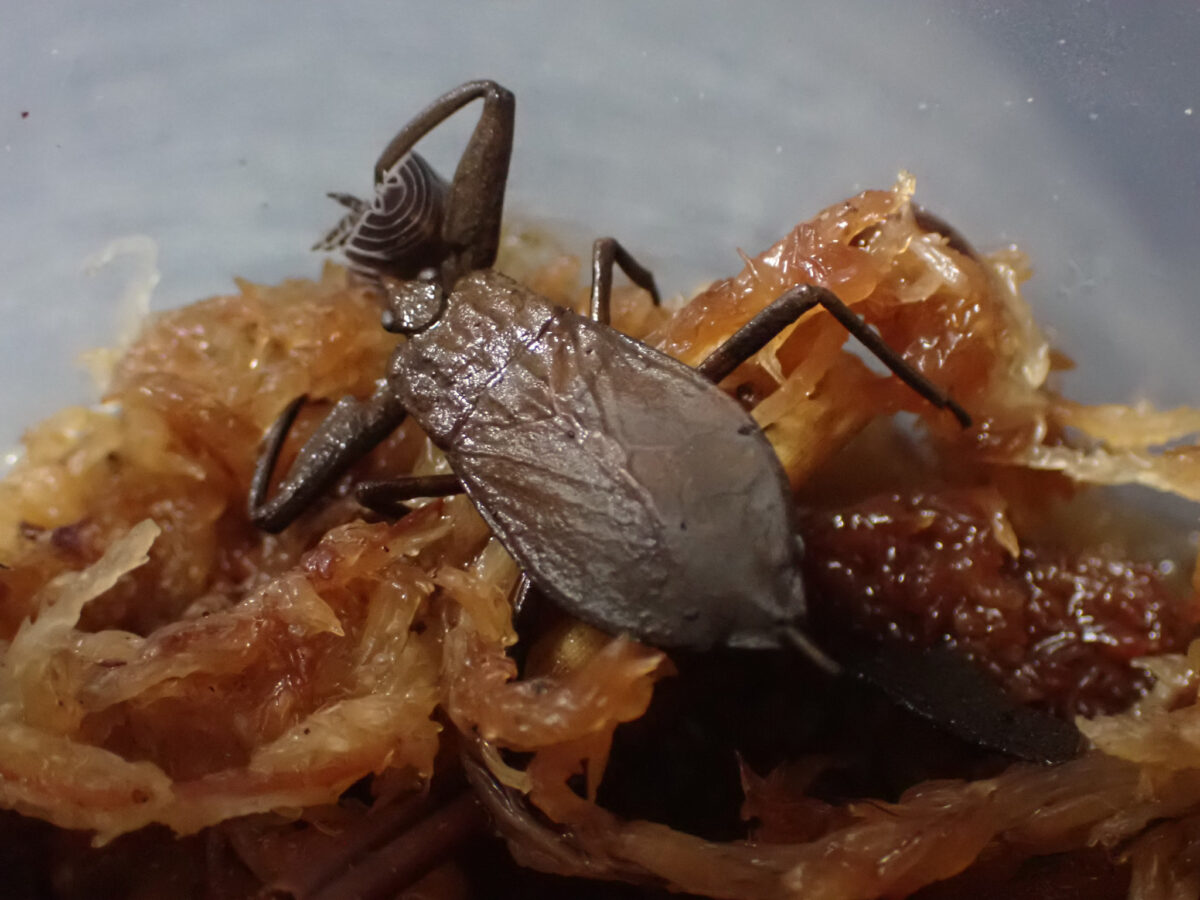

As the name 2010 is,Nepa rubra is a big water scorpion inhabiting Southeast Asia. I’ve never even seen a living body. The body length excluding the breathing tube reaches 40-45 mm, and it is nearly 1.5 times that of water scorpion in Japan. Living organisms are sometimes distributed in Japan, but it is expensive.
